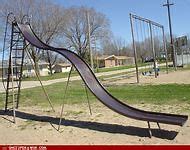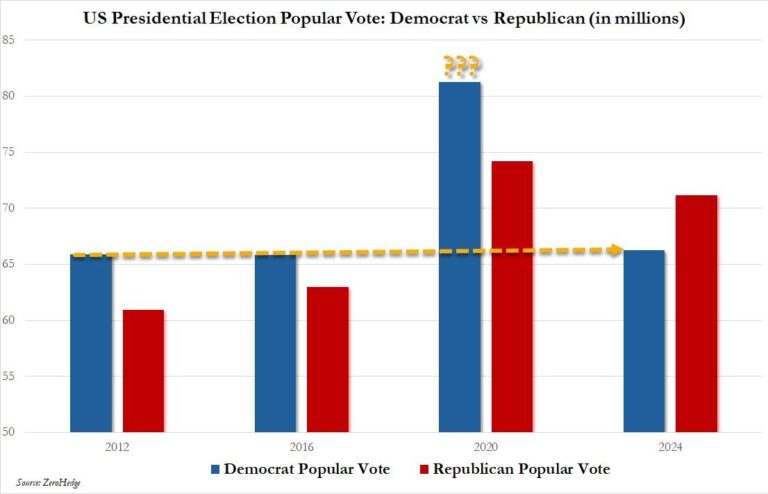
When I was a kid we had these huge climbing structures and metal swirly things whose sole job was to spin kids around up to and including the speed of light until their sweaty ketchup stained little mitts could no fight the centrifugal force and they’d lose their grip on the metal bar and be flung out onto gravel and cement.
And then you’d get back on.

I remember once I climbed this giant metal man in our school playground. The thing had a cowboy hat on the top. We were in the third grade and we’d all play “King of the Cowboy” which meant essentially you’d throw everyone else off the cowboy. It was just like “King of the Hill” but on metal bars and there were straight drops of twenty feet. To be clear, this was not something we did when teachers weren’t looking. We’d wave to them while standing on the cowboy hat as other children grabbed at our legs hoping to pull us off. It was like Lord of the Flies but on gravel.
One time John Gariboldi who was by far the most ruthless player to exist in the third grade climbed up after me. We were the only two left. To be clear, Gariboldi in the third grade inexplicably had muscles. I don’t know how or why. But he did. He had the strength of a 43 year old man in the third grade.
I climbed up all the way to the cowboy hat kicking at him underneath me. Yeah, that’s what we did back then. I climbed up the metal man’s nose and grabbed on to the hat. I pulled myself up and sat on the hat. Gariboldi stealthily followed. I attempted to kick down at him but he grabbed hold of my leg and pulled. Immediately, my grip loosened. A moment of cold panic raced through me . I desperately clung to the sides of the metal cowboy hat. I peered down momentarily and it truly was a dizzying height down to the gravel below. If I fell I believed I was sure I’d die.
He had hold of me and he was smiling because he knew I was helpless. He raised himself up higher. He now had me around the knees. I was doomed. I’d surely be pulled down and I’d hit every metal bar on my descent until I reached the earth a mile or two below.
“OK. OK. I’m coming down,” I yelled.
He looked up at me. “You promise?” he asked.
I said, “Dude, I don’t want to die.” (But notice I cleverly didn’t promise because even at the height of my panic the want to win the game sought to leave some small angle in which I could win.)
“OK.” Gariboldi let me go. I’d cashed in on years of friendship and he relaxed at which time I immediately kicked him in his chest. I connected with all my power. The behemoth third grader rocked backwards, reeling in shock and horror, feeling the brunt of my betrayal in his solar plexus.
And guess what? He didn’t fall. The insane brute held on somehow. He looked up at me and smiled. The insane little boy smiled with glee. He wanted me to kick him so he could toss me from the cowboy hat with a clear conscience. I quickly scampered to the other side of the cowboy hat, spinning myself and began lowering myself down the other side. All hope was lost. I could only attempt to be flung from a slightly less scary height. I’d only gone down a few feet when Gariboldi swung over to my side with the ease of a primate and began peeling my fingers off the metal bar with a horrible glee.
Imagine my horror as he wrenched back my pinky. Then my ring finger. Then he grabbed hold of my middle finger and wrenched it.
My grip loosened and he pushed me. I fell. I fell for what seemed like a month. I landed hard on the gravel, my teeth crashing. I lost all my air and looked up to the sky sure that these would be my last moments on earth. I looked to the sky expecting a chorus of angels but only saw the grinning visage of Gariboldi swinging above me and laughing. Oh, what a cruel world.
In a few minutes I was able to breathe again and guess what I did? I got back onto the huge cowboy for the next round. But this time I’d learned not to go too high. In fact, I also came up with a plan. I spoke to people in whispers and we formulated a plan that we’d all attack Gariboldi together and get rid of him quick. We all agreed! It was a plan. I climbed up to about halfway, and as I got close to my nemesis I yelled “Now!!!”
And I was the only one who attacked Gariboldi and he tossed me off with ease and I landed with a thud.
But I learned many things that day. I learned not to climb all the way up to the cowboy hat. I learned risk assessment that day. I also learned that people can not be trusted to carry out my crazy plans.
I learned a great deal on that metal man with the cowboy hat. I’m thankful. I think we all need more metal men with cowboy hats in our lives. And maybe even a Gariboldi or two.
Just a note: John Gariboldi ended up become a pro-life activist/preacher/ and father of eight kids.
Anyway, the reason I’m bringing all this up is because Germany is making their playgrounds for children more dangerous. What? I know.
In perhaps the most countercultural move I’ve seen in a while they’re adding risk and danger.
Reason: Germany is adding greater risk to its playgrounds. Some of its climbing structures are now three stories high. And who is requesting this?
Insurance companies. They want kids to grow up “risk competent.” Ironically, “safety” culture is stunting kids’ risk assessing abilities, in their estimation.
“This is fantastic progress in understanding childhood as the right time for children to learn to recognize and mitigate risk,” says Gever Tulley.
Tulley should know. He’s founder of the San Francisco Brightworks School author of 50 Dangerous Things (You Should Let Your Children Do).
The idea for letting kids develop some basic climbing competency has grown in popularity in Germany. An influential 2004 study had found that “children who had improved their motor skills in playgrounds at an early age were less likely to suffer accidents as they got older,” according to The Guardian. Moreover:
With young people spending an increasing amount of time in their own home, the umbrella association of statutory accident insurers in Germany last year called for more playgrounds that teach children to develop “risk competence”.
That’s music to an actuaries’ ears—and also to some parents’. My friend Siobhan is a New York native who moved to Germany. A few years ago, when her daughter was in elementary school, she says, “The school replaced the standard playground equipment with four long, thick trees with their branches removed, all interconnected with wide ropes and wobbly bridges made of rubber. The whole thing was maybe six feet at the tallest point. But the trees had been polished so they were slippery.”
Sure enough, says Siobhan, the very first week they were installed, “A girl fell off and broke her arm. As an American, I nervously anticipated the outrage that would surely follow. My heart was in my throat as I eavesdropped on the other parents at pick-up the following day. What did I hear? ‘Children need to learn their limitations!'” There were no lawsuits are calls to tear down the equipment.
“Even international safety standards organizations—so often the ‘fun police’ when it comes to playgrounds—are coming round to a more balanced, pro-risk view,” says Tim Gill, author of Urban Playgrounds: How Child-Friendly Planning and Design Can Save Cities.
While the appetite for risk here in the U.S. is perhaps a little slower to develop, New York City built its first adventure playground, The Yard, in 2016, complete with hammers, nails, and plenty of wood and saws. It stands by its credo: “No parents allowed.” And as a denizen of play conferences, I can attest that many play scholars are eager for more exciting playgrounds.
Unfortunately, that runs smack into our culture’s habit of underestimating kids, overestimating danger, and hiring trial lawyers.”
Me again: I suspect that chldren pay a price for not ever feeling the cold grip of Gariboldi pulling on our leg while we cling hopelessly to the metal cowboy hat.
I think there has to be a happy medium, somewhere between making the world with rubber corners and the Squid Game. Something in between there would be nice.


